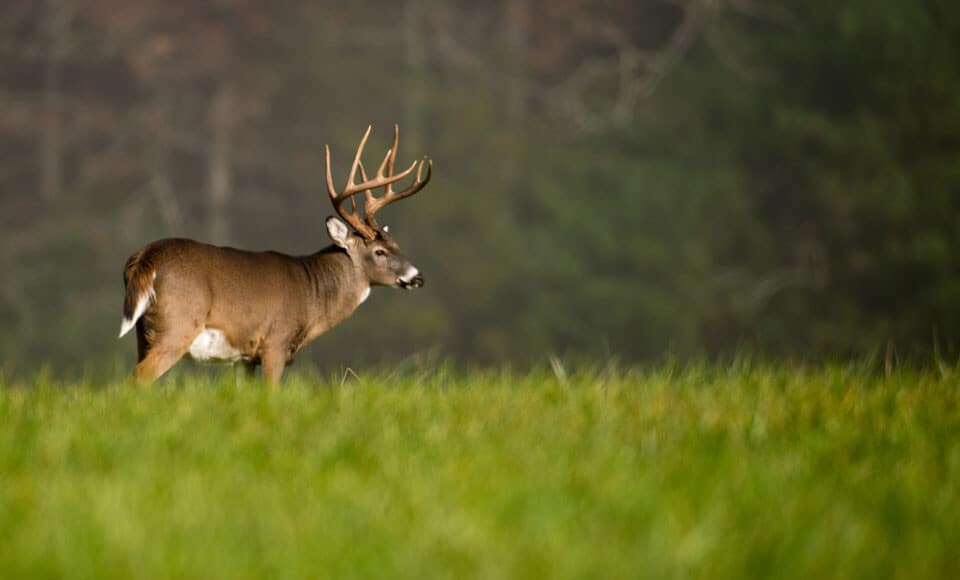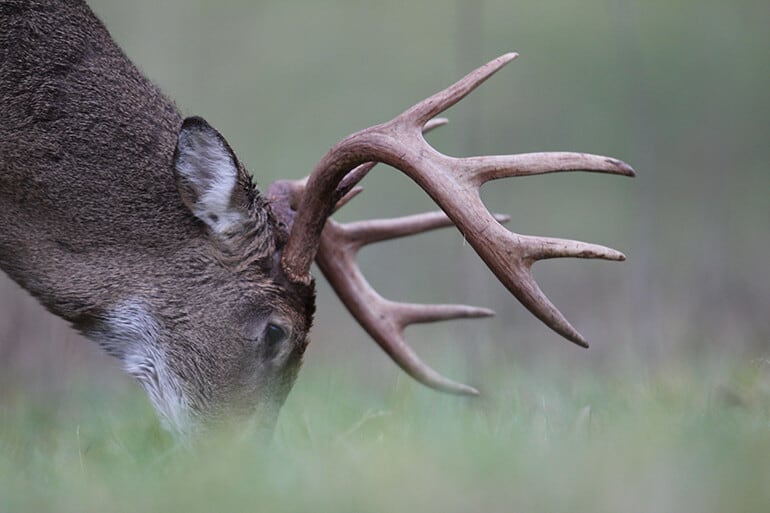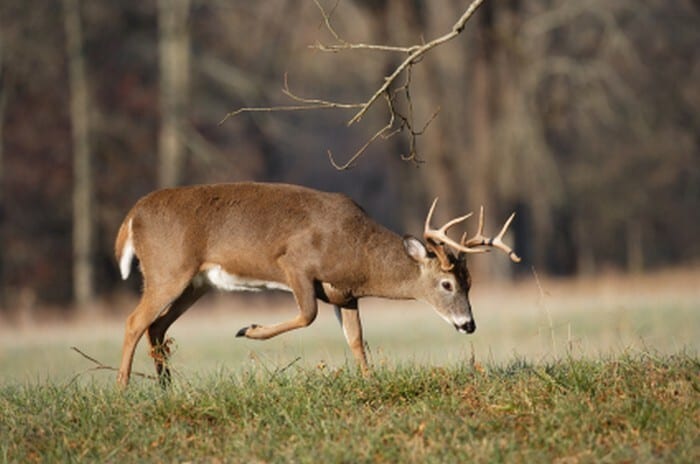You likely have plenty of ideas of where you may want to hunt on your property, but which area is the best? If you have a lot of agricultural fields on your property, should you hunt those? What about the popular trails and bedding areas in the woods? I have hunted fields and timber alike for many years, so let’s go over which one is better and when to consider the alternative.
Typically, you will see more deer in the woods traveling to secluded food sources and social hotspots rather than hanging out in fields. Plus, mature bucks tend to stay in the safety of the timber. Although, fields with plenty of food available will attract plenty of deer during non-breeding periods.
With that being said, I have had success hunting both woods and fields and neither is always better than the other. So let’s take a closer look at the benefits of hunting both, and when you may want to change things up.

Which Do Deer Prefer?
Whitetail deer in general are going to go where the food is. If there is a large field with plenty of food nearby, then they will feed in it. Although, if it is just a field of grass and there is a better food source elsewhere, you will not see many deer in that field. However, even fields of grass offer an abundance of food, even if it is of lesser quality. So eventually deer are going to be there when preferred food sources run low.
The best time to keep your eye on a field is during the early and late parts of the season. This is when deer are really trying to pack on the pounds, so they are going to go where the most food is available. They will be especially interested in fields if you put a little bit of work into them. Even no-till food plots provide a lot of extra food for whitetail and can change their feeding habits when your plot starts to produce nutrient-dense food.
Mature deer are likely to stay around the edges of fields. Field edges provide a lot of protection while also allowing them to feed. They can still get all the food the field has to offer, but they have better concealment and an easy getaway if they need it.
There will be openings on these edges where you can commonly see deer walking in and out of. These are the best areas to hunt around while deer are interested in fields. Early in the season when deer are focused on bedding and feeding, these field edge openings are going to be a pinch point where many deer come through.
I recommend hunting close by these openings, but still having eyes on the field itself. This way if bucks do come in the field, you can see them. If they use the popular field edge, you will be sitting within bow range.
On the other hand, if there are plenty of food sources in the woods, deer may stay there. It all depends on the property, but if there is a nice patch of acorns or another high-value food source, deer are going to focus on that.

Do Big Bucks Stay In the Woods?
If you are trying to attract bucks to your property, the main thing you need to consider is security. Mature bucks love security and feeling safe. So, it is not surprising that a particular buck would choose to stick to the woods instead of going out in the fields.
If a buck gets to maturity, he did not do it by being stupid. He is going to be a little paranoid and looking for threats. So if he does go to the fields, he will likely stick to the edges. However, it all depends on the particular buck, and the food sources available.
If he has everything he needs in a secluded patch of woods, why would he leave? That is until the rut starts, but that is a different story. The best thing you can do is set up a wide net of trail cameras and try to figure out where bucks are hanging out.
If there are a few food sources in the woods, hang some cameras nearby. Then also hang a few around field edge openings. Then you can use something like DeerBrain to analyze these pictures and figure out when exactly bucks are moving and where they are showing up.
The Best of Both Worlds: Transition Areas
How a particular buck behaves has a lot to do with the property itself. For example, if we had a property that had literally one food source, every deer would go there. However, that is not the case. Deer can eat more than corn and food plots. They will eat browse, acorns, fruits, and many other things.
Deer also will not eat just a singular food source either. They will go to and eat multiple types of food. That’s why the best place to set up in the early season is between food sources in a transition area.
These transition areas can be anything. Places like strips of woods between food plots, field edges, trails between food sources, and trails leading to bedding. Basically, you will find the most deer traveling in these transition areas, and the same goes for bucks.

They are going to travel between bedding, their scrapes, and their favorite food sources. It is not as much about fields or the woods as it is about covering all the resources that deer need on a daily basis.
There can be a number of these areas on a single property, so you are going to have to do some summertime scouting to figure out where deer like to move and which trails they are using the most. A simple trail camera strategy can tell you a lot about how deer in your area are going to move during the fall season.
Conclusion
If you are just looking for deer, you will always find them at the most popular food source. Deer have to eat, and it is their main focus during most of the year. If you have planted a nice food plot for them, you can bet they will be there. Although, if there is a better or more available food source elsewhere, like an acorn patch, they could be there too.
Mature bucks are going to go to the safest food sources and when they do go to fields they will likely spend a lot of time in the field edges. The most important thing is knowing how many of these food sources you have. You can then set up in the transition areas between them and get a shot at any deer traveling in them.
